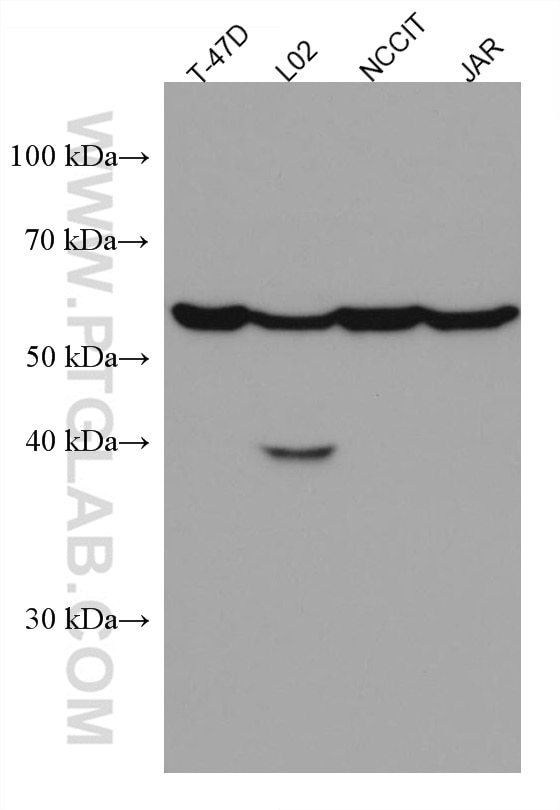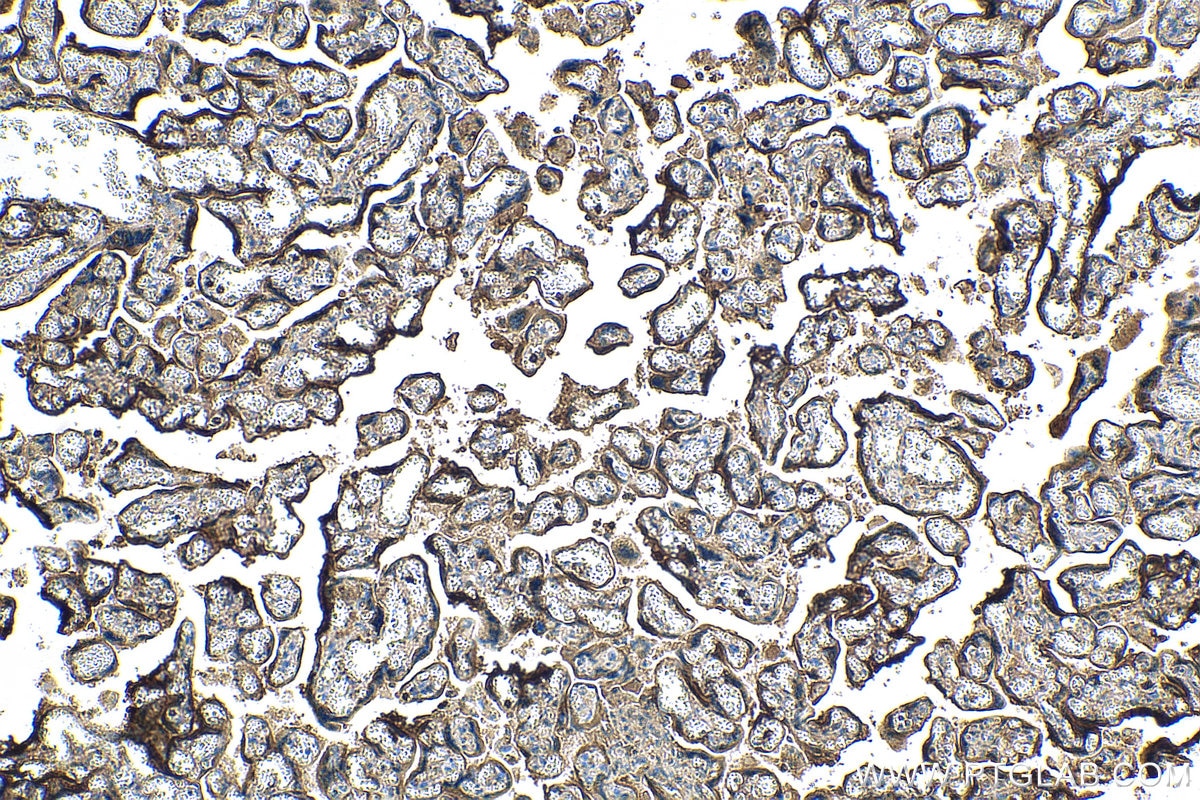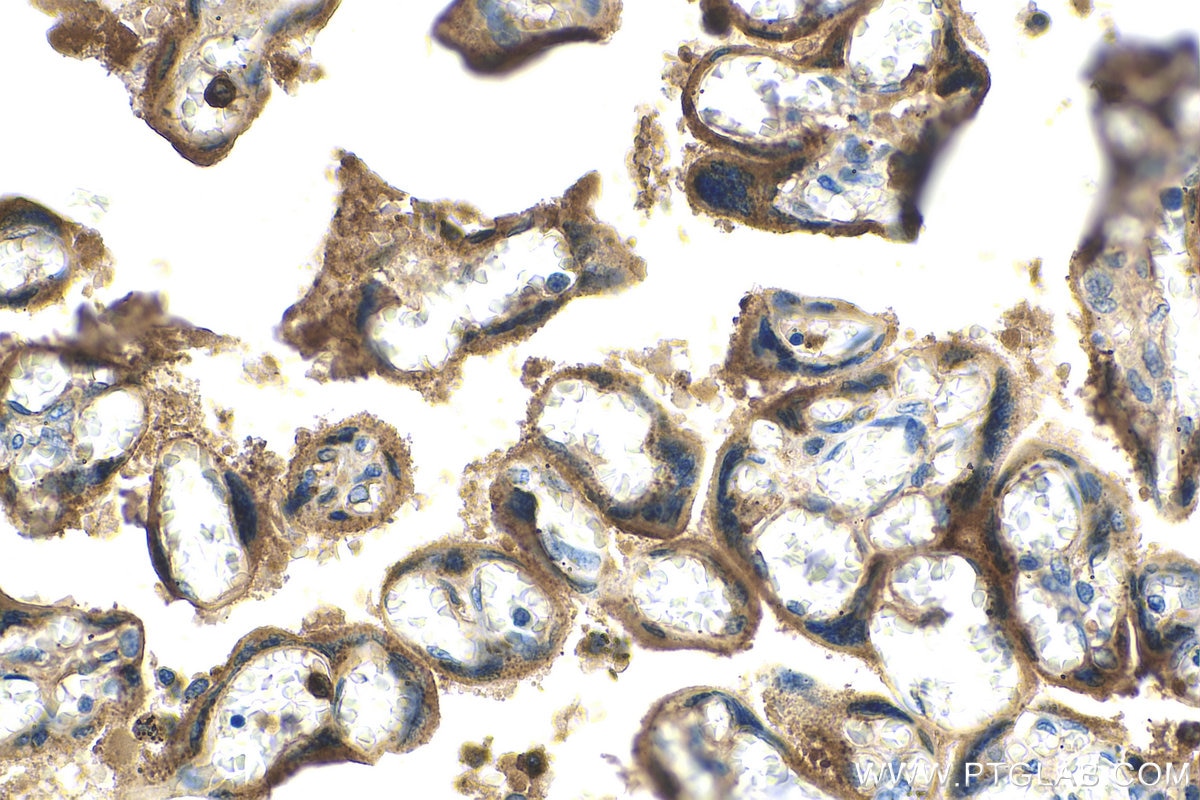PSG1 Monoklonaler Antikörper
PSG1 Monoklonal Antikörper für WB, IHC, IF-P, ELISA
Wirt / Isotyp
Maus / IgG1
Getestete Reaktivität
human
Anwendung
WB, IHC, IF-P, ELISA
Konjugation
Unkonjugiert
CloneNo.
1C6C4
Kat-Nr. : 67269-1-Ig
Synonyme
Geprüfte Anwendungen
| Erfolgreiche Detektion in WB | T-47D-Zellen, JAR-Zellen, L02-Zellen, NCCIT-Zellen |
| Erfolgreiche Detektion in IHC | humanes Plazenta-Gewebe Hinweis: Antigendemaskierung mit TE-Puffer pH 9,0 empfohlen. (*) Wahlweise kann die Antigendemaskierung auch mit Citratpuffer pH 6,0 erfolgen. |
| Erfolgreiche Detektion in IF-P | humanes Plazenta-Gewebe |
Empfohlene Verdünnung
| Anwendung | Verdünnung |
|---|---|
| Western Blot (WB) | WB : 1:5000-1:50000 |
| Immunhistochemie (IHC) | IHC : 1:2500-1:10000 |
| Immunfluoreszenz (IF)-P | IF-P : 1:200-1:800 |
| It is recommended that this reagent should be titrated in each testing system to obtain optimal results. | |
| Sample-dependent, check data in validation data gallery | |
Produktinformation
67269-1-Ig bindet in WB, IHC, IF-P, ELISA PSG1 und zeigt Reaktivität mit human
| Getestete Reaktivität | human |
| Wirt / Isotyp | Maus / IgG1 |
| Klonalität | Monoklonal |
| Typ | Antikörper |
| Immunogen | PSG1 fusion protein Ag28604 |
| Vollständiger Name | pregnancy specific beta-1-glycoprotein 1 |
| Berechnetes Molekulargewicht | 426 aa, 48 kDa |
| Beobachtetes Molekulargewicht | 54-70 kDa |
| GenBank-Zugangsnummer | BC022338 |
| Gene symbol | PSG1 |
| Gene ID (NCBI) | 5669 |
| Konjugation | Unkonjugiert |
| Form | Liquid |
| Reinigungsmethode | Protein-G-Reinigung |
| Lagerungspuffer | PBS with 0.02% sodium azide and 50% glycerol |
| Lagerungsbedingungen | Bei -20°C lagern. Nach dem Versand ein Jahr lang stabil Aliquotieren ist bei -20oC Lagerung nicht notwendig. 20ul Größen enthalten 0,1% BSA. |
Protokolle
| PRODUKTSPEZIFISCHE PROTOKOLLE | |
|---|---|
| WB protocol for PSG1 antibody 67269-1-Ig | Protokoll herunterladen |
| IHC protocol for PSG1 antibody 67269-1-Ig | Protokoll herunterladenl |
| IF protocol for PSG1 antibody 67269-1-Ig | Protokoll herunterladen |
| STANDARD-PROTOKOLLE | |
|---|---|
| Klicken Sie hier, um unsere Standardprotokolle anzuzeigen |






